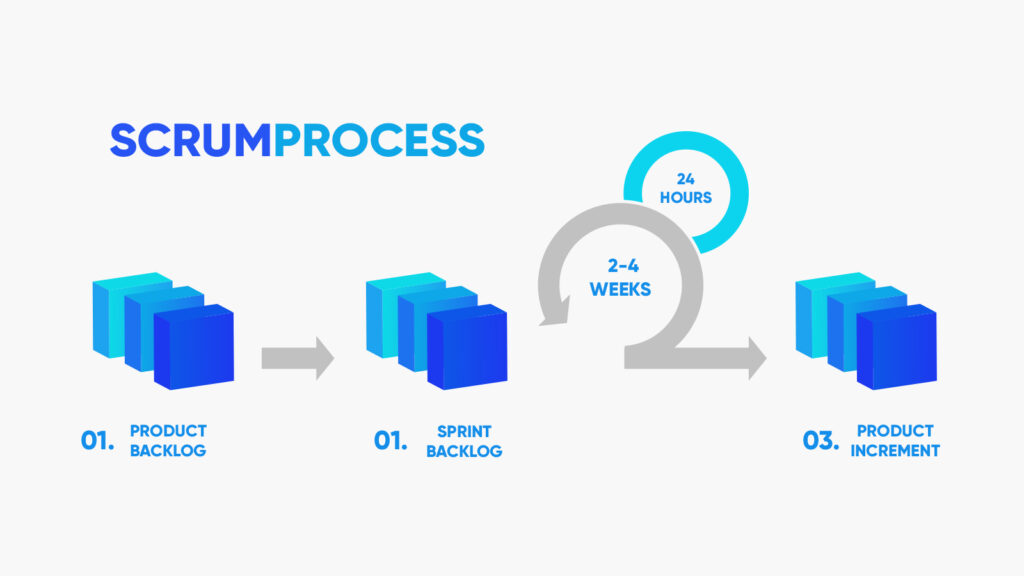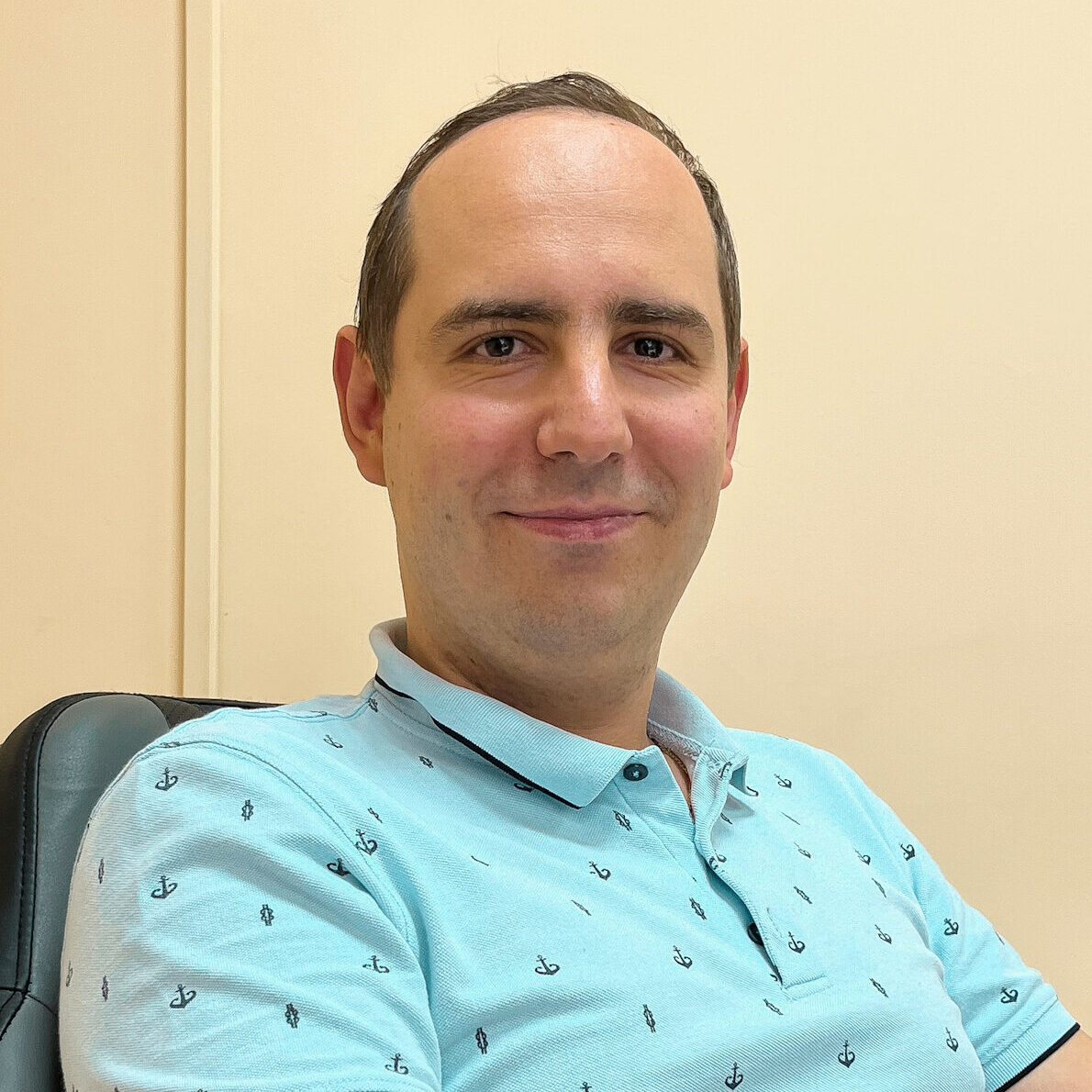The Scrum Cycle in Agile Software Development

Agile is a highly malleable methodology of software development that accelerates the development process by promoting cross-functional teamwork, communication among stakeholders and a disciplined project management approach.
Scrum is a popular subset of Agile that provides an iterative process framework for product development. Scrum is most suitable for teams of 5-9 developers working on novel and complex projects, of medium to large size. Scrum is less likely to work well for projects with multiple development teams, or for upgrades of existing products.
The Scrum process speeds up development without compromising quality. Its popularity is due to its fixed-length iterations, or sprints, that break the development process down into manageable tasks that eliminate chaos and miscommunication, and move the project forward.

Table of Contents
Key Scrum Principles
Scrum, in simple terms, is a values-driven process based on the principles of transparency, inspection and adaptation. It provides a set of practices that optimize teamwork, to ensure a quality final product that meets the requirements of the client and provides a satisfying and productive user experience.
Scrum’s principles are driven by 5 core values:
- courage
- focus
- commitment
- respect
- openness
In essence, the Scrum team enters into a collaborative pact that inspires the highest individual performance of team members, and contributes to a smooth and productive workflow.
Core Roles in Scrum Development
One of the key characteristics of the Scrum development process is the well-defined roles of its participants.
There are fundamentally 3 Scrum roles:
- Product Owner: The PO is a vital link between the development team and the product stakeholders, including the customer. The PO is aware of the project’s business and market requirements, and keeps the team moving forward toward its goals and vision. The PO has the important role of building and managing the product backlog, to keep the project on task and on time.
- Scrum Master: It is the role of the Scrum master to keep on top of the project’s status and ensure that the development team follows the Scrum process. The SM communicates with the Product Owner, organizes meetings and deals with obstacles and bottlenecks as they arise.
- Scrum Development Team: The team is made up of 5-9 developers, programmers, designers and testers who collaborate to make the magic happen. They do not have designated roles, but are given a specific set of tasks to complete in a given sprint.
The 3 Artifacts of Scrum
In software development, artifacts are tools created by project participants to facilitate the development process.
Read Also: Pharmacy Management Software Development: Benefits, Features, Principles, Guidelines

The Scrum process relies on 3 key artifacts:
- Product Backlog: The product backlog is the Bible of a software development project. It is the initial planning process of Scrum that defines and prioritizes Scrum steps necessary for the successful completion of the project. The Product Owner and Scrum Master collaborate to groom the product backlog before sprint planning begins. It is a living document that is continually refined, revised and reordered throughout the development process.
- Sprint Backlog: The sprint backlog is a microcosm of the product backlog that lists the tasks to be completed in a single sprint. User stories that describe the product’s desired functionality are included in a sprint backlog.
- Product Increment: A Scrum product increment represents the sum of completed items during a sprint. For a new increment to be “done,” it must be readily usable and available for release, although it is up to the Product Owner to decide when to release it.
Scrum Phases (Events)
Once the product backlog has been built, the Scrum development process can commence. It consists of a series of sprints, each set to accomplish a specific set of tasks. The role of the Product Owner during a sprint is to answer questions, accept user stories from team-members, and decide when an increment is “done.”
Each sprint is subdivided into 5 phases, or Scrum events.
- Sprint planning: During the sprint planning session, the Srum Master meets with the development team to plan details of the upcoming sprint. The team collectively decides which high-priority items in the product backlog can reasonably be completed during the sprint, given their available time and resources. Tasks are then assigned to individual team members.
- Daily Scrum: This brief daily is meeting limited to 15 minutes or less. The purpose of the daily Scrum is to check in with other team members, assess the day’s progress, discuss any issues and plan the next day’s work.
- Sprint review: The sprint review is a tune-up session that typically takes place on the last day of a sprint. It looks at what went well, what went wrong and what can be done better. Customers, managers and other stakeholders may attend the sprint review, to view “done” increments and provide feedback.
- Sprint retrospective: The retrospective is the final meeting at the end of a sprint, attended by the Product Owner, Scrum Master and development team. During the meeting, participants discuss what improvements can be made, and how to implement them in future sprints.
- Sprint: The sprint itself is considered an element of the development process. It encompasses all the work and events that occurred during its limited time increment.
Custom Healthcare Solutions
See how we can engineer healthcare software, validate your ideas, and manage project costs for you.
Agile Scrum Software Development at Tateeda
Successful Agile Scrum development depends on experienced professionals who are dedicated to creating high-quality products. At Tateeda, each product meets all of our customer’s requirements while delivering exceptional user experience. If you have a unique concept for a complex software project and want it delivered in a timely manner, contact Tateeda today.
Click here to learn more about the benefits of Agile methodology.













